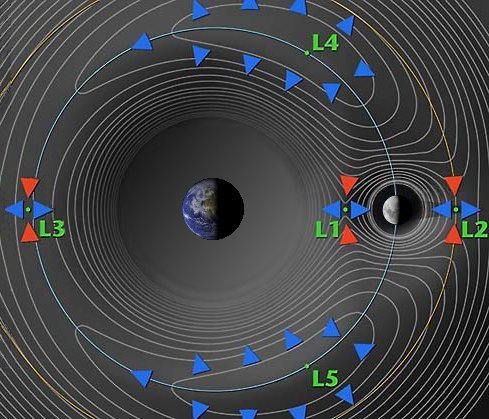OK, so the Earth - Moon L4 and L5 points are about as far from Earth as the Moon. The advantage of going there and leaving there, compared to the Moon's surface, is that it does not have a local gravity well that requires a lot of propellant to brake into and launch out of.
But, there is nothing there to work with, unless it is brought there by space craft.
On the Moon, there is at least some gravity to help with human health, some natural materials that can be use for shielding from radiation and meteorites, and, hopefully, at least some water to use for life support and maybe even for making rocket fuel. And, there is also the possibility of finding a lot of some elements that are rare on Earth and useful for technological devices. Plus, the Moon serves as a shield from the light pollution and radio emissions from Earth if a telescope is placed on the far side.
So, despite the propellant penalty, it seems like a Lunar base would be both easier to establish and maintain, plus better for scientific investigations of the universe, not to mention the science value of figuring out how the Moon was formed by examining it closely.
Maybe some day there will be heavy industry in space using materials from asteroids to make space craft and propellant for travelling even further into space. But, I don't see that happening until long after we have demonstrated a lot of the necessary technological achievements that will be necessary to establish and maintain long duration habitats on the Moon, and probably also on Mars.
At this point in our biological understanding, some sort of gravity or surrogate force seems essential to astronauts' long term health. "Artificial gravity" can be produced by rotating a large space craft/station. But docking and undocking other spacecraft from a rotating space station is not so simple. To dock on the axis, the space craft needs to "roll" at the same rate of rotation, AND it needs to have its docking mechanism aligned with its center of mass, which might be an issue for variable amounts of fuel remaining in tanks, various loads of raw materials coming in, and various shapes of heavy manufactured goods going out. Docking elsewhere might be accomplished with an automated system that matches the rotating latching mechanism with an assortment of thrusters on the craft, but then the docked spacecraft will shift the center of rotation for the compound assembly. Whatever design is chosen for a free orbiting space station, it seems like it would be a good idea to develop and get some practice with the technologies in low earth orbit first, before trying to put one out at the orbital radius of the Moon.



